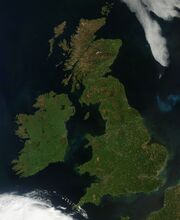No edit summary Tag: Source edit |
No edit summary Tag: Source edit |
||
| Line 7: | Line 7: | ||
The '''Kingdom of Morgaf''' consisted of a number of islands in the [[Western Ocean (Down in the Bottomlands)|Western Ocean]] off the northwest coast of the [[Great Continent (Down in the Bottomlands)|Great Continent]]. It was separated from its long time enemy, the [[Hereditary Tyranny of Tartesh]], by the relatively narrow [[sleeve (Down in the Bottomlands)|Sleeve]]. |
The '''Kingdom of Morgaf''' consisted of a number of islands in the [[Western Ocean (Down in the Bottomlands)|Western Ocean]] off the northwest coast of the [[Great Continent (Down in the Bottomlands)|Great Continent]]. It was separated from its long time enemy, the [[Hereditary Tyranny of Tartesh]], by the relatively narrow [[sleeve (Down in the Bottomlands)|Sleeve]]. |
||
| − | Morgaf was populated by [[Strongbrow]]s and ruled by a [[Unnamed King of Morgaf|King]]. Over the centuries, Morgaf fought numerous wars with Tartesh but had been at an uneasy peace for the last twenty years. Many believed this was due to the invention of the [[starbomb]] some fifty years prior. |
+ | Morgaf was populated by [[Strongbrow]]s and ruled by a [[Unnamed King of Morgaf|King]]. Over the centuries, Morgaf fought numerous wars with Tartesh, but had been at an uneasy peace for the last twenty years. Many believed this was due to the invention of the [[starbomb]] some fifty years prior. |
===Literary comment=== |
===Literary comment=== |
||
Revision as of 07:14, 27 March 2021

The British Isles are a group of islands in the North Atlantic off the north-western coast of continental Europe, consisting of the islands of Great Britain, Ireland, the Isle of Man, the Hebrides and over six thousand smaller islands. They have a total area of 315,159 km2 (121,684 sq mi) and a combined population of almost 72 million, and include two sovereign states, the Republic of Ireland (which covers roughly five-sixths of Ireland), and the United Kingdom of Great Britain and Northern Ireland (which also comprises England, Wales, and Scotland). The Channel Islands, in the English Channel off the north coast of France, are sometimes taken to be part of the British Isles, even though they do not form part of the archipelago.
Literary comment
Most Harry Turtledove timelines have a Point of Divergence well after the 6th century AD, in which cases the status of the British Isles can be found at England and/or United Kingdom. This article deals with a few exceptional examples of an unusually early Point of Divergence, and stories by Turtledove and Laura Frankos set in OTL prior to AD 500 or so.
British Isles in "Down in the Bottomlands"
The Kingdom of Morgaf consisted of a number of islands in the Western Ocean off the northwest coast of the Great Continent. It was separated from its long time enemy, the Hereditary Tyranny of Tartesh, by the relatively narrow Sleeve.
Morgaf was populated by Strongbrows and ruled by a King. Over the centuries, Morgaf fought numerous wars with Tartesh, but had been at an uneasy peace for the last twenty years. Many believed this was due to the invention of the starbomb some fifty years prior.
Literary comment
While not precisely stated, it is likely that Morgaf comprises the entire British archipelago.
British Isles in "The Horse of Bronze"
The Tin Isle was once inhabited by the Nuggies, who exported tin to the Centaurs. One day tin shipments abruptly stopped coming, prompting the centaur Cheiron to mount an expedition to investigate this disappearance. Cheiron found that the Nuggies had gone all but extinct and been replaced by the mans. Though Cheiron found the mans very intimidating, he negotiated a trade agreement whereby shipments of tin to the centaurs' homeland would resume. However, at a feast commemorating this agreement, some drunken centaurs brawled with mans, and the agreement was abrogated. The centaurs barely escaped with their lives and never returned to the Tin Isle again.
British Isles in "A Massachusetts Yankee in King Arthur's Court"
Little is known about the history of Britain after the fall of the Roman Empire and before the rise of the Saxon kingdoms. In 1963, an archaeological expedition to Colchester, England found an American dime in a pre-Saxon town which was believed to be a historical analog of King Arthur's Camelot. While most believed that it was left there by a careless tourist in recent times, visiting US President John F. Kennedy knew better.
References
| ||||||||
| ||||||||
| |||||||||||